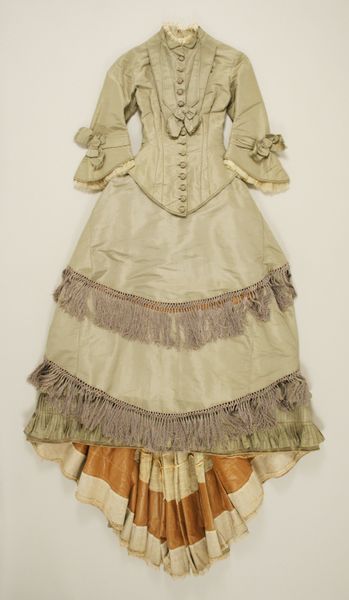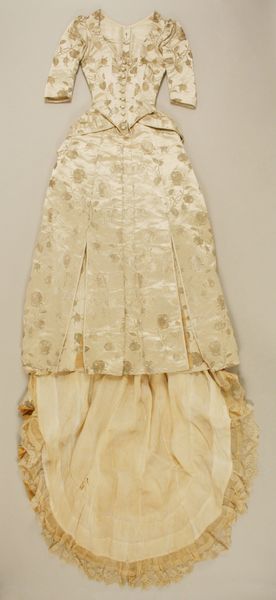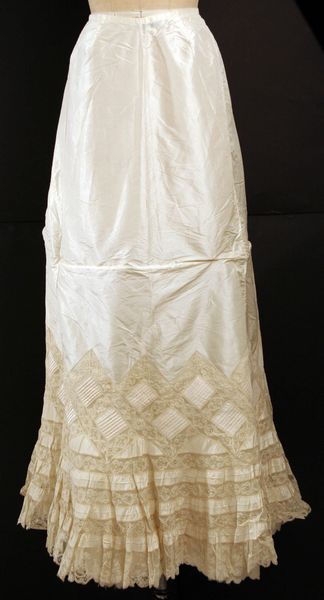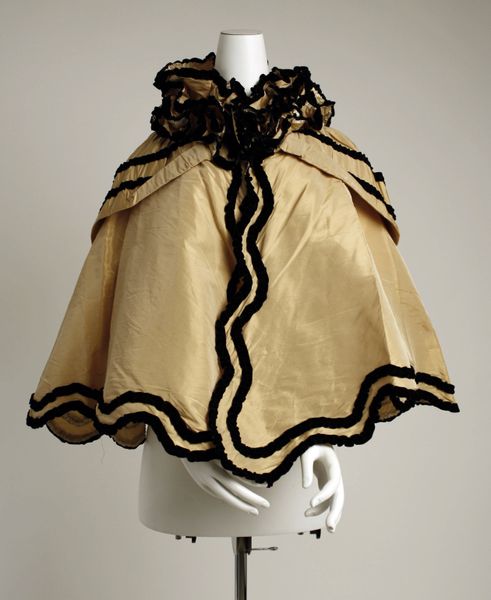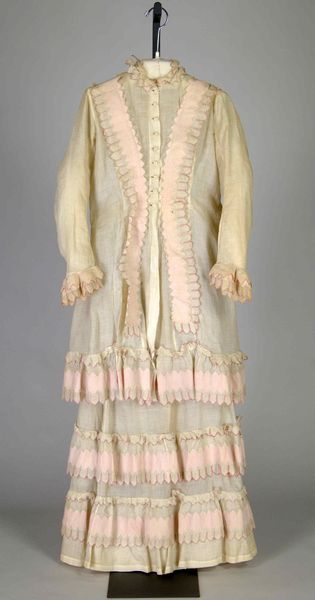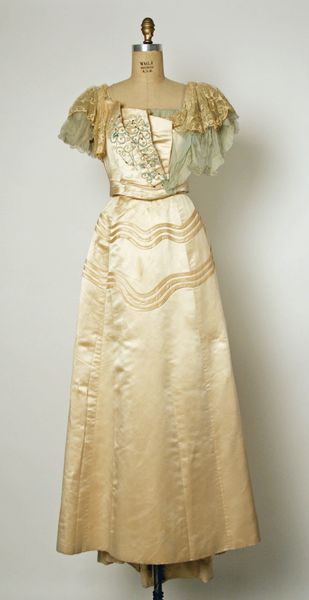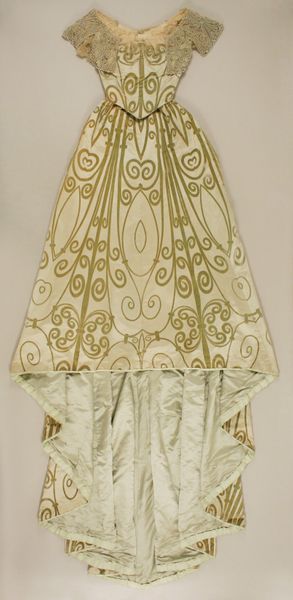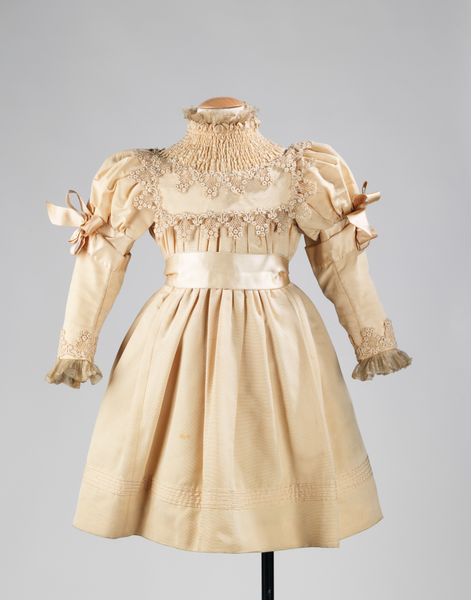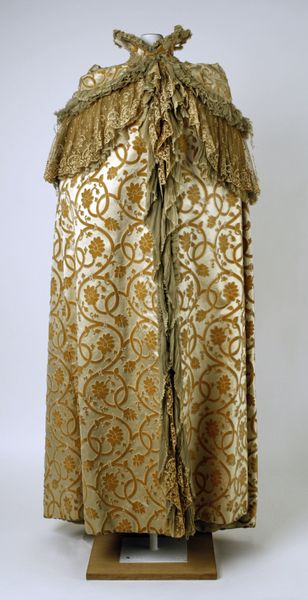
textile
#
fashion design
#
underwear fashion design
#
textile
#
collage layering style
#
fashion and textile design
#
historical fashion
#
wearable design
#
costume
#
watercolour bleed
#
textile design
#
clothing design
#
bridal fashion
Copyright: Public Domain
Editor: This is "Ensemble," a dress from sometime between 1862 and 1872, made by Depret, currently residing here at the Met. The fabric and the cut create this incredibly soft, almost dreamlike impression, don't you think? What is your read on this dress? Curator: Well, dresses like this, particularly those worn in court or for formal occasions, played a significant role in 19th-century social hierarchies. Consider the wearer; clothing like this declared social standing, access to resources, and allegiance to particular cultural values. The specific design, with its emphasis on delicate fabrics and detailed ornamentation, mirrors the socio-political currents of its time. Do you see echoes of power in those soft folds? Editor: Power? It’s more ornate and precious. Curator: Exactly. It's precious because access to such garments, during that era, was not universal. This reflects not merely aesthetic choices but the institutional structures that dictated who could commission and wear such clothing. Think about the labor, materials, and patronage systems involved. It's also relevant to think of where something like this might be displayed, its presence reinforcing existing norms. How do you think this piece operates now in the museum space? Editor: So, its elegance acts almost like a display of power in and of itself? Now I see that there are also certain expectations and norms around what types of bodies are worthy of such clothing! I guess I approached the piece as strictly fashion without seeing the socio-economic side of it. Curator: Precisely! It becomes an artifact of those historical systems, even when admired solely for its artistic value. Fashion, even historical fashion, can invite questions of inclusion, exclusion, and power dynamics, when we decide to look at these textiles beyond just personal expression and beauty.
Comments
No comments
Be the first to comment and join the conversation on the ultimate creative platform.
